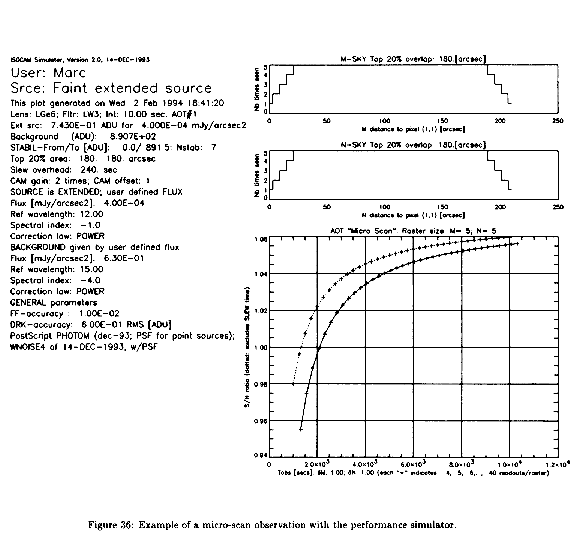 Jy/''
Jy/'' with
a signal-to-noise ratio of at least 15. The observation will be
performed using the broad-band filter LW2, and at this wavelength the
background emission is estimated from the IRAS database to be
80
with
a signal-to-noise ratio of at least 15. The observation will be
performed using the broad-band filter LW2, and at this wavelength the
background emission is estimated from the IRAS database to be
80  Jy/''
Jy/'' .
.




Here we wish to observe an extended galaxy. From its IRAS flux we want
to be able to detect a surface brightness of 100  Jy/''
Jy/'' with
a signal-to-noise ratio of at least 15. The observation will be
performed using the broad-band filter LW2, and at this wavelength the
background emission is estimated from the IRAS database to be
80
with
a signal-to-noise ratio of at least 15. The observation will be
performed using the broad-band filter LW2, and at this wavelength the
background emission is estimated from the IRAS database to be
80  Jy/''
Jy/'' .
.
In the simulator, the source and the background flux density spectra
are modelled as power laws with exponents respectively of  = -1 and
-4 (where
= -1 and
-4 (where  is in
is in  ). The spectra are
normalized respectively at 12 and 7
). The spectra are
normalized respectively at 12 and 7  m, corresponding to the
central wavelength of the IRAS and LW2 filters.
m, corresponding to the
central wavelength of the IRAS and LW2 filters.
Since the source is quite bright and stronger than the background, with an extension smaller than the field-of-view, we selected the single pointing observing mode (CAM01).
We chose an integration time of 2 s, a pixel field of view of 6'', and decided to estimate the observing time starting from a situation where the detector is not illuminated (last flux is 0.0).
The results of this simulation are presented in figure  .
On this figure we can see two curves, but only the lower one interests
us here since the upper one does not take into account either the finite
flat-field accuracy, or the stabilization time (here 43 readouts,
.
On this figure we can see two curves, but only the lower one interests
us here since the upper one does not take into account either the finite
flat-field accuracy, or the stabilization time (here 43 readouts,
 90 s).
90 s).
From this curve, we see that in 200 s observing time, we will reach a S/N of 17, thus meeting our initial request. Furthermore this curve also shows that longer integration times would not bring any improvement to the quality of the observation.
Do not forget that 180 s have to be added to this observing time to account for telescope pointing.

Figure: Example of a micro-scan observation with the performance
simulator.